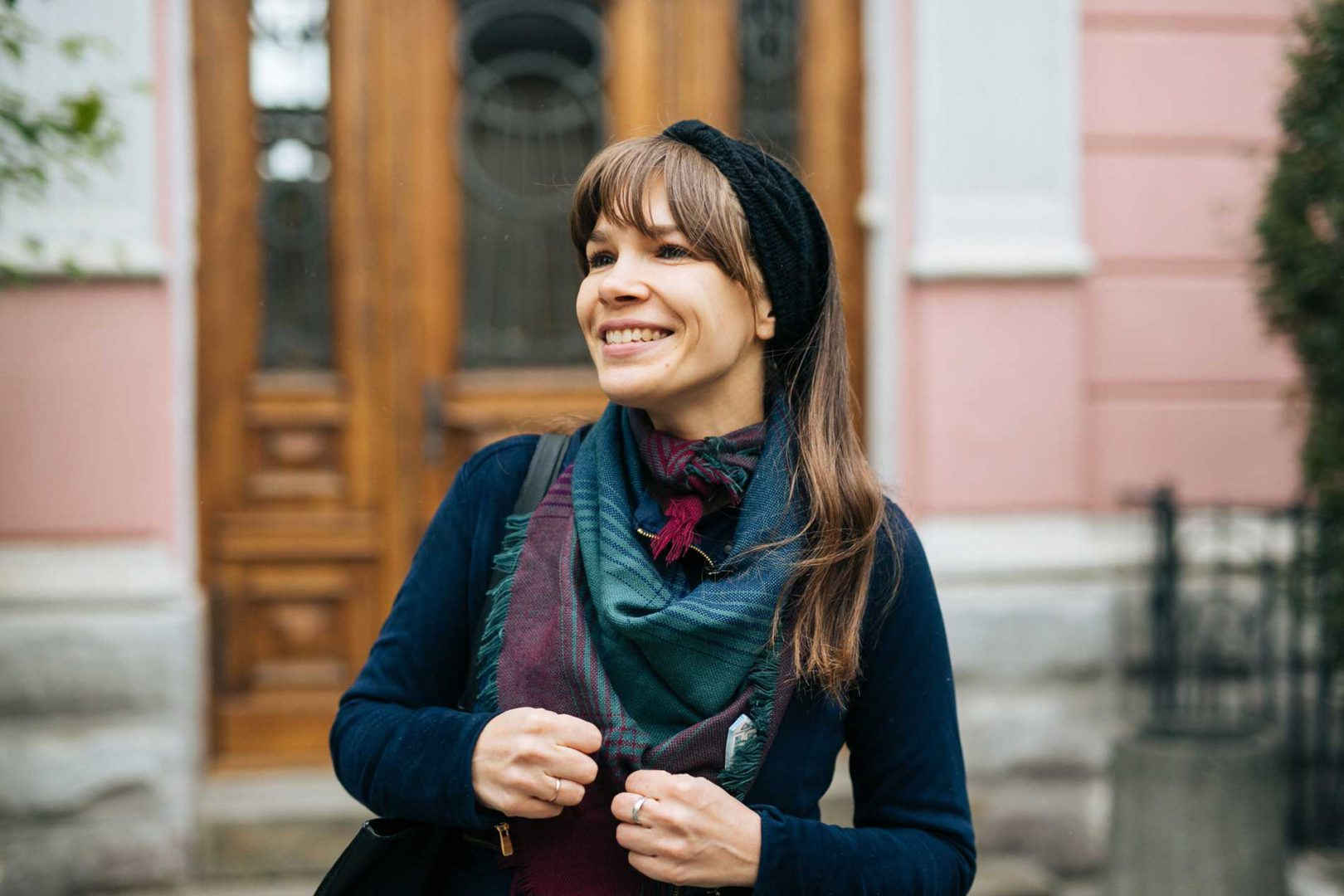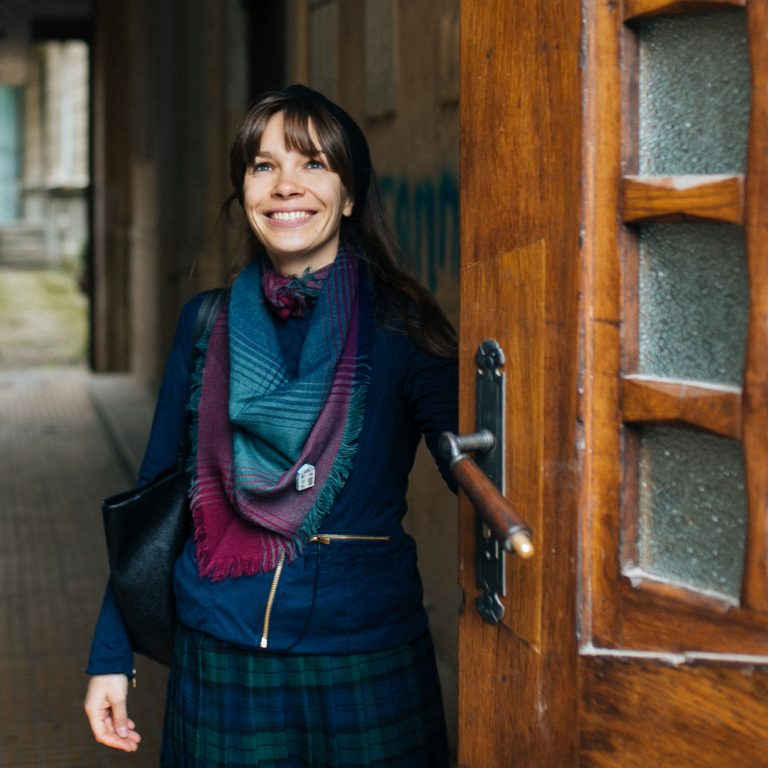In 2016, a public movement for restoration of historical legacy started in Ivano-Frankivsk. It is called “Frankivsk That Should Be Cherished”. It was founded by a public activist Mariya Kozakevich. First, they took under their care old entrance doors of historical buildings. Over a few years, they managed to gather a team of carpenters, smiths and glass artists, who participate in restoration work, as well as activists responsible for spreading the idea. In a brief period of time, they saved over 20 doors, some of which had to be recovered from junk yards to replace the already installed plastic ones.
For the third year in a row, concerned activists use the hashtag #франківськякийтребаберегти (Frankivsk That Should Be Cherished) to post pictures and information about historical architectural buildings of Ivano-Frankivsk on social media. They do everything in their power to draw the attention of locals and city guests to the problem of changing appearances of the once luxurious building facades and their antique doors and windows, as they are replaced with reinforced or plastic pieces, following today’s modern trends.

The organisation takes responsibility for restoring aesthetic beauty, which often goes neglected: moldings, hand-forged elements, carvings, etc. They also show the city’s “inner world”, admiring courtyards and venerable buildings, to make people begin to “wake up” and notice the beauty around them. The organisation treats antique doors with special care, as the doors serve not only a decorative purpose but a functional one too. In addition to their involvement in door restoration, the activists have already published an interactive coloring book for children, developed excursions, and continue to promote careful treatment of history, architecture and culture of their city.
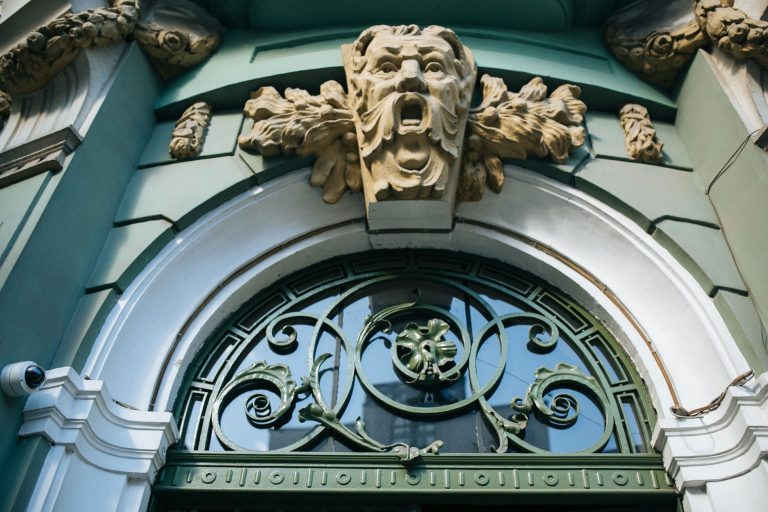
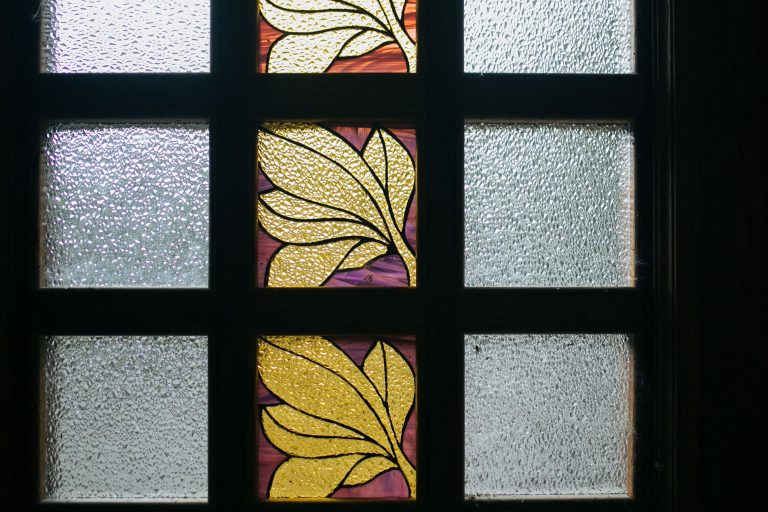
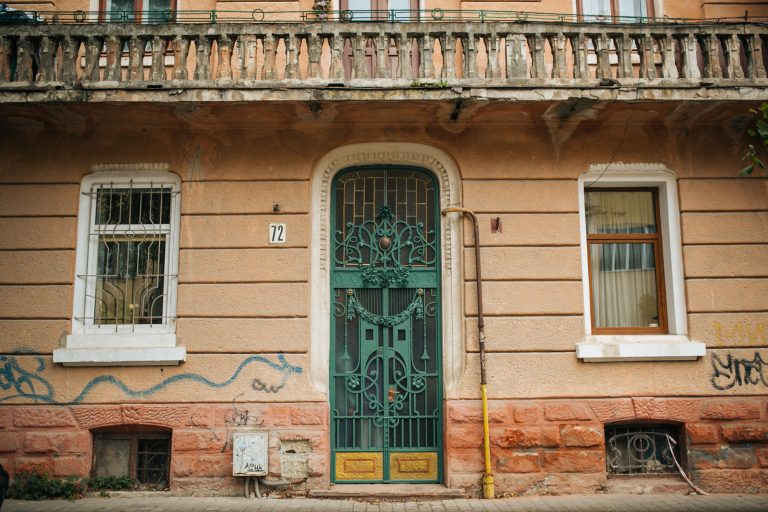
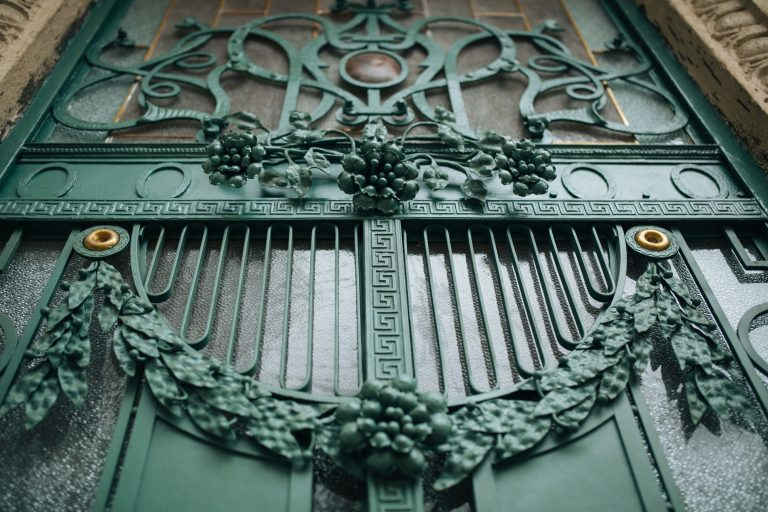
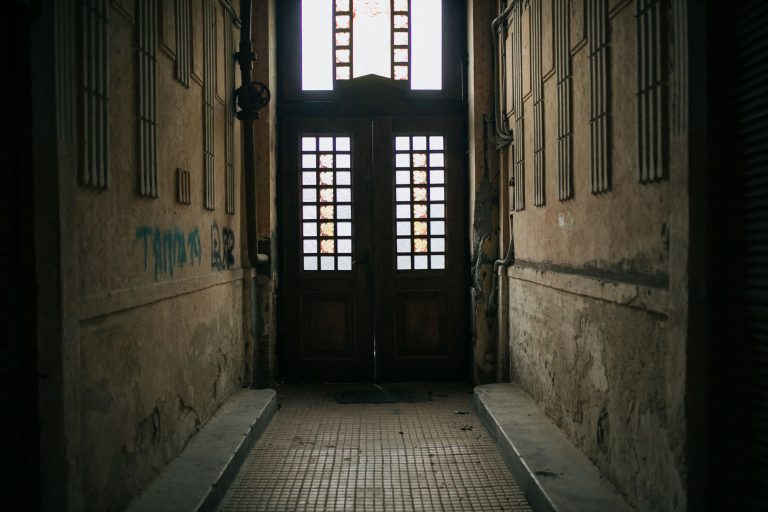
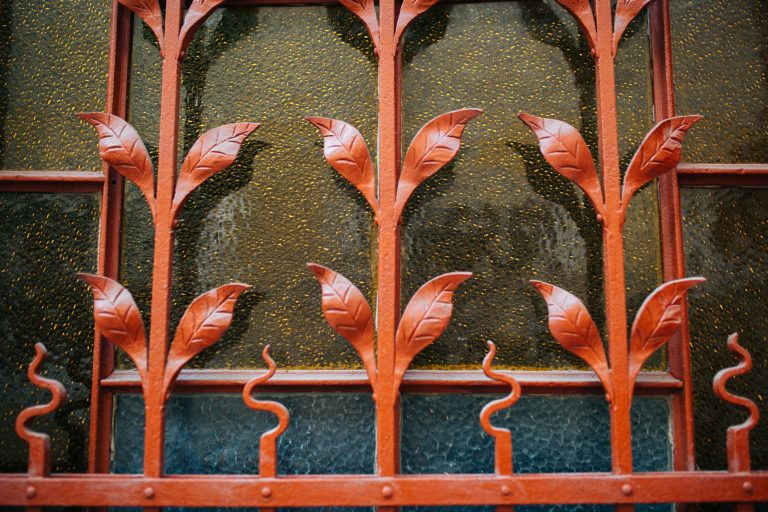
slideshow
Modern Frankivsk and the Stanislav’s History
Mariya Kozakevich initiated the movement, and she can tell much about the results of its two-year activity. She has a realistic outlook, however, and knows that you can’t grasp all aspects. For this reason, a small, neat sign always hangs off each restored door and reads “Frankivsk That Should Be Cherished.”
— The name, it really does explain the state of things in the city: it truly wants you to start preserving it. It’s a simple statement of fact, and it encourages you to take certain actions.
Leading by example, the people organised by Mariya and her husband, Yurii, show the hidden treasures of Frankivsk, where to find them and how to take care of them.
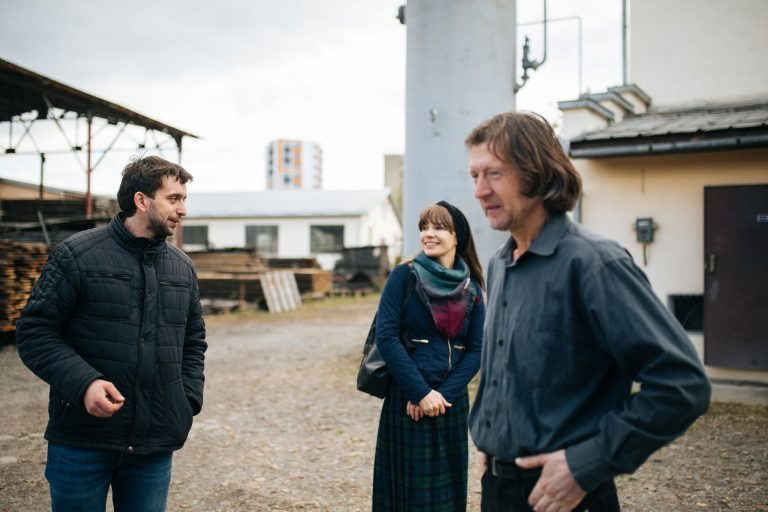
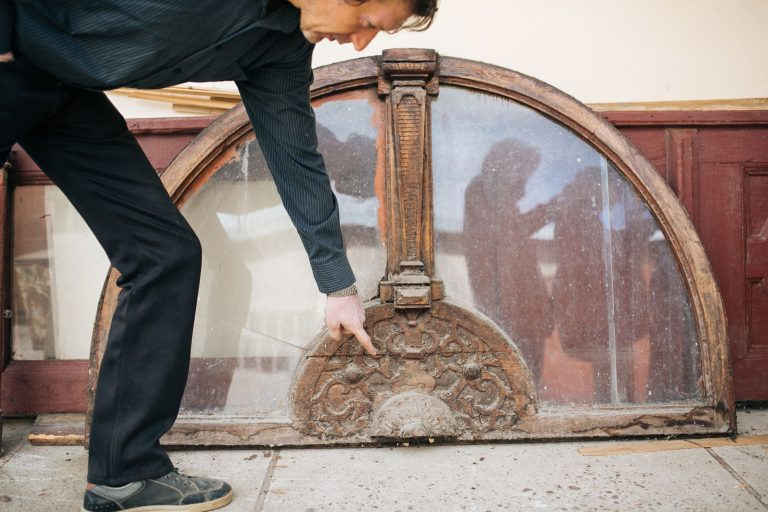
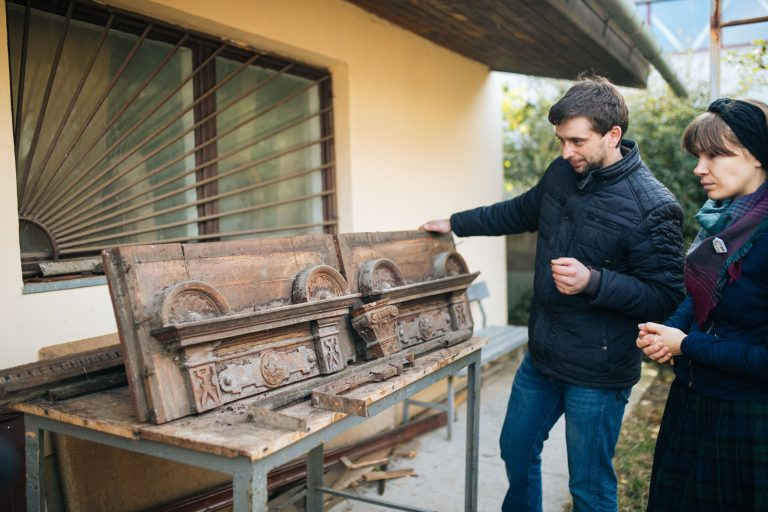
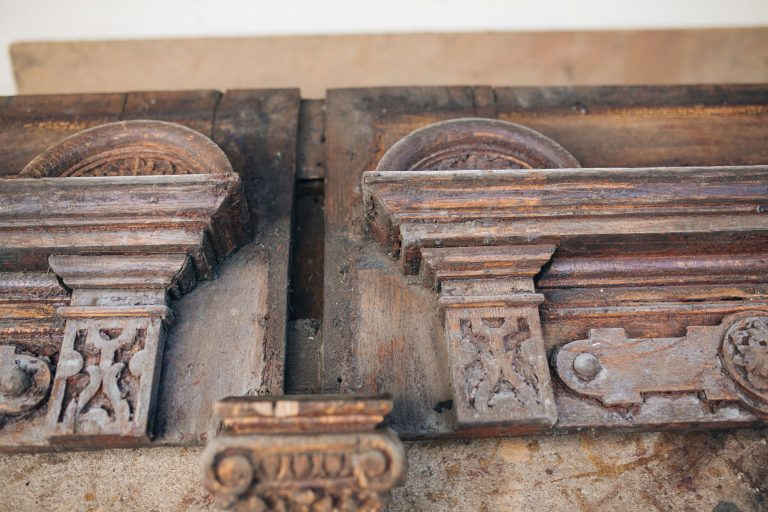
slideshow
The city of Ivano-Frankivsk itself, which is relatively young in Galichina, also holds memories of its founders, the Pototskys, as well as of the Austrian Hungarian period and the West Ukrainian People’s Republic. Every epoch has left something behind: luxuriously decorated mansions, the foundations of the Bastion, temples and residential buildings. They were generous in making doors and windows from high quality wood, which they could access thanks to the close proximity of the Carpathian Mountains. Often, the craftsmen would team up to improve their crafting skills and make every wooden piece unique.

The doors were made to order for families whose houses were being built in the city center. As with many other cities of Galicia, the then-called Stanislaviv was very multicultural: here lived not just Ukrainians, but also Poles, Germans, Jews and Armenians. Each culture added its flair to the decorations of the houses and other mundane things. After World War II, everything changed radically. As if earlier the houses were mostly inherited by the future generations who treated thoughtfully what was built and preserved by their families, in postwar times these houses got occupied by new people.
— After World War II, a great number of people were uprooted physically. For instance, Jews and even Ukrainians and Poles moved away. And the composition of the population became very different. All those empty places were occupied by new people who had no ties to the city. And what did they do? Of course, they assimilated and became Frankivsk citizens. But they’ve yet to develop a strong sense of belonging and responsibility, unfortunately.
So stone house courtyards, where you enter through a set of heavy carved doors, with intricate spiral stairs, lantern lights on the ceiling and colorful Mettlach tiles on the floor, are starting to escape the notice of new citizens. Each person seems to hide in the shell of their own home, taking only superficial care of the common areas of their building.
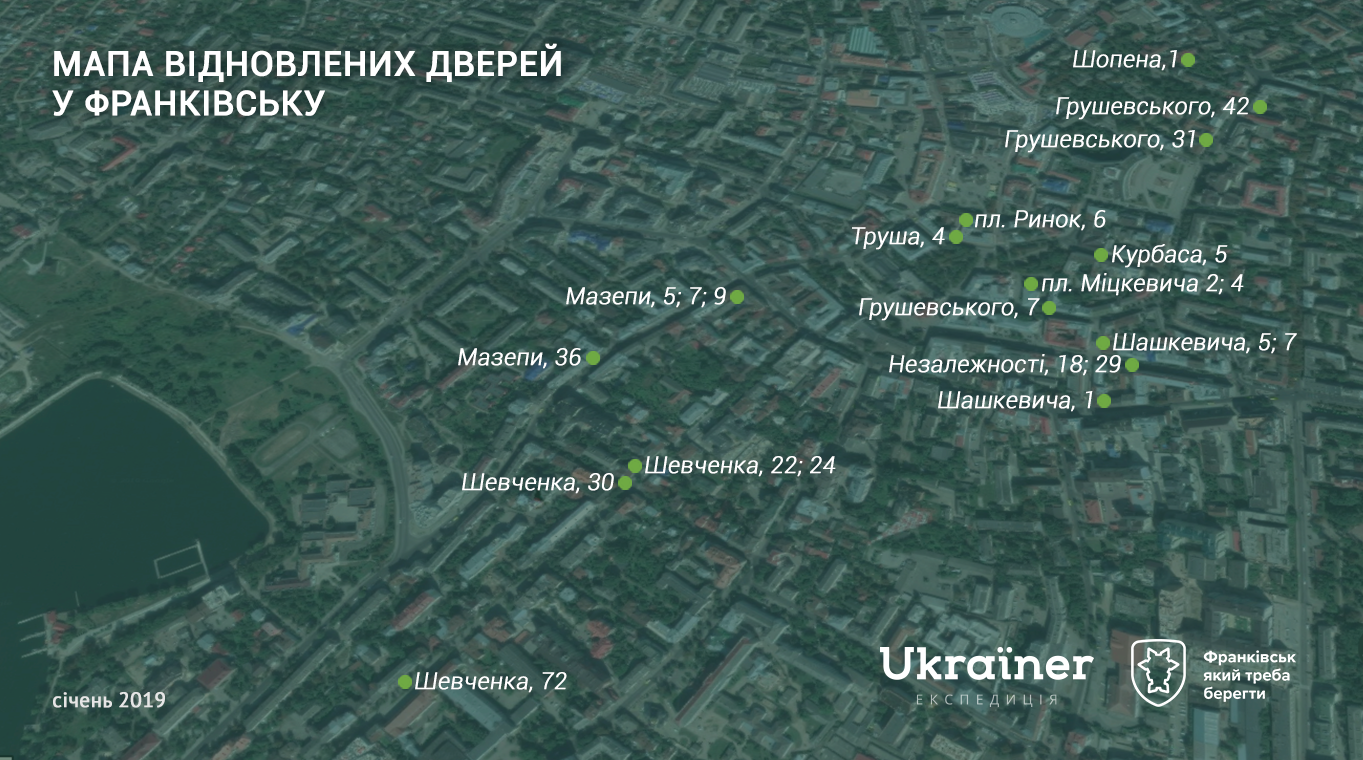
Mariya and the Mettlach tiles
Mariya Kozakevich is a Frankivsk citizen who took interest in history long ago. She was studying papers of local historians and reading various books about Frankivsk of different times. During her pregnancy leave, she used to walk around the city a lot. Her interest in it was only getting stronger, so she started to stop by open buildings, enter courtyards in the city center and take a closer look at the unobtrusive details that decorated the facades overall.

Mariya herself jokes that it all began with what lay underfeet. When they decided to redecorate their place, she was looking for tiles and couldn’t find what she wanted on the Internet. Her search brought her to the ancient Mettlach tile ornaments that attracted her attention.
The tile itself is very long-lasting and endures years of service. In the late nineteenth and early twentieth centuries, it was often used for decorating both public buildings and private houses. Such floors could contain unbelievably complex ornaments, they were not slippery to walk on, and their reliability and durability can be proved even now in the buildings where they have served for almost a hundred years. No wonder that she wanted to have such long-lasting tiles at her place.
Most of the sources devoted to this material stressed the historical value of this decoration, its uniqueness and the importance it had in decoration of antique buildings. So, while she pondered ways to decorate the floor at her own place, she started to pay more and more attention to what was under her feet in the buildings she would walk into. In many places, she would find this exact style of tiles — the Mettlach tiles.
Mettlach tile ornaments
The name comes from the German city of Mettlach, where the very first production of this tile was launched.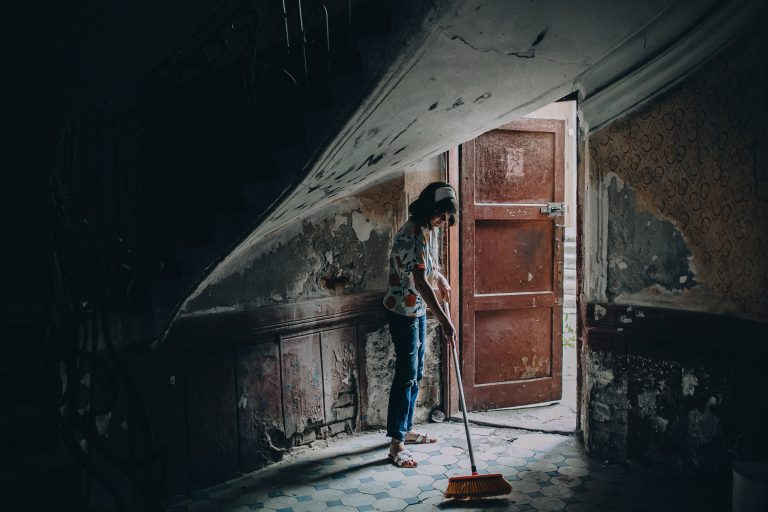
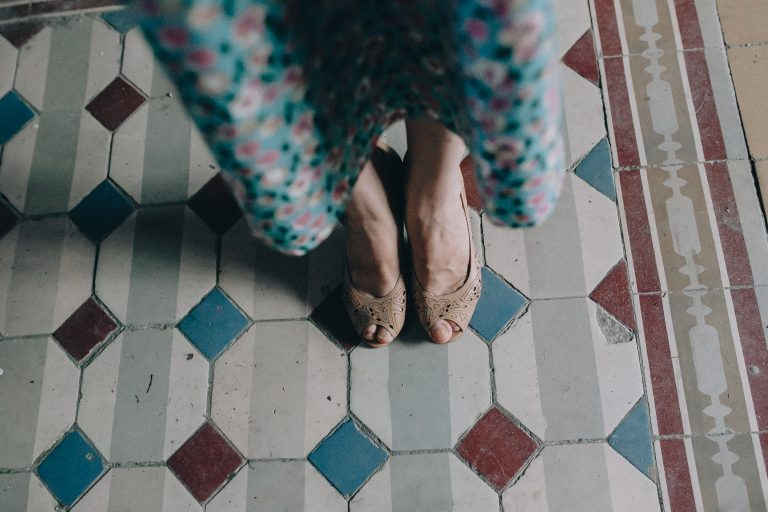
slideshow
— Together with children, I used to walk around the city. Just as a matter of interest I was looking into the buildings, and on the one hand I was fascinated, I liked it, all those glass lanterns, beautiful tile with ornaments, the doors, the windows. And on the other hand, I was shocked how bad its condition was.
The woman began to take pictures of her own feet standing on a beautiful Mettlach tile, publish these photos in social media in order to show that the beauty lying under the feet all this time, that survived sometimes two wars and changed its owners at least a few times, didn’t fade away. Not only does it fascinate with its aesthetics, but with practicality as well: laid by skilled workers, Mettlach tile often has no cracks or holes and as a result may serve for many more years. Against it though, the buildings themselves, the entrances and their facades, oftentimes looked pretty neglected.
— And the contrast with something as beautiful as this one, I often call “beauty and the beast”. When something so brilliant has to exist in a desolation and human indifference.

In this exact way the walks through the native city showed Mariya the treasures, which she didn’t notice until then. She started to discover Frankivsk anew: to find marble window sills, finished by artists walls, molding on the ceiling, hammered elements on the stairs, windows and doors. She wanted so badly to share her findings, and that’s why, in the IT era, she started to write about it on her private page in social media telling about her findings hashtagged as #ФранківськЯкрийТребаБерегти (Frankivsk that Should be Cherished), which later encouraged to new actions:
— We created a Facebook group and that’s how the name “Frankivsk that should be cherished” was born. And later we saw that it was not enough to just write about it or talk about it. We had to take actions, physical actions, so that a person could simply come, view it and see the difference.
Thus we started our work with the first door at the address 5 Kurbasa Street.
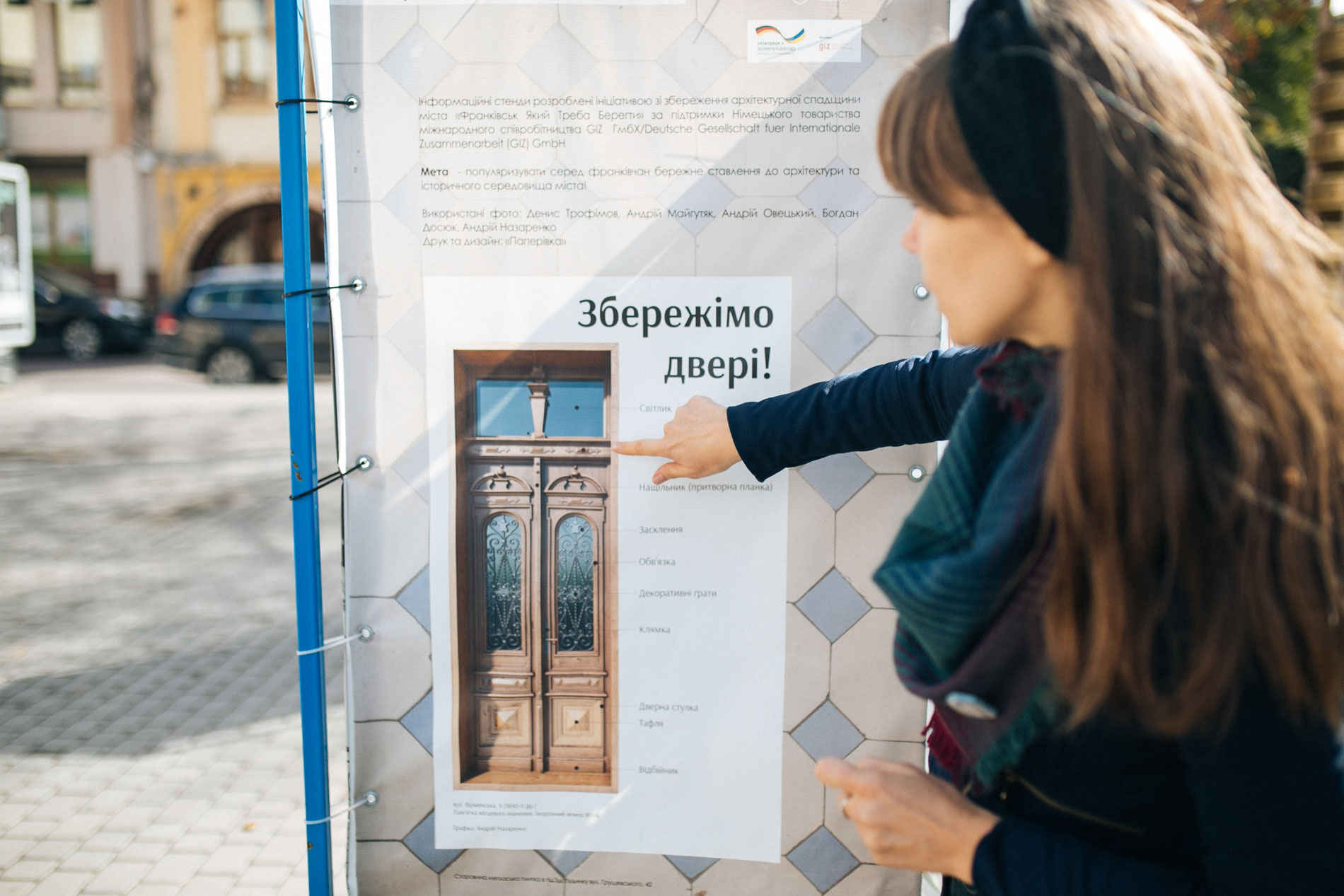
The Doors and the Courage to Open Them
Today the initiative “Frankivsk that should be cherished” is actively involved in restoration of the doors and facades around the door embrasures.
Marichka can tell almost everything about twenty doors restored: from their manufacture date, the so-called diagnosis before restoration up to the duration and details of the works on their renovation.
— As a matter of fact, like medical examiners make diagnoses after the autopsy, we as restorers can make a diagnosis of a door when we peel the paint. Then we can exactly estimate its condition and what we need to do to restore its good physical view.
The door is more than just a facade’s decoration, it’s a useful everyday thing. Exactly through this door everyone coming into the building has contact. Apart from that, it’s a certain protection, warmth keeper and a very handy tool for everyone:
—Truth be told – the door is a symbol. It’s the entrance to the building and one of the greatest architectural dominants. And each person entering the building touches its door in the first place.
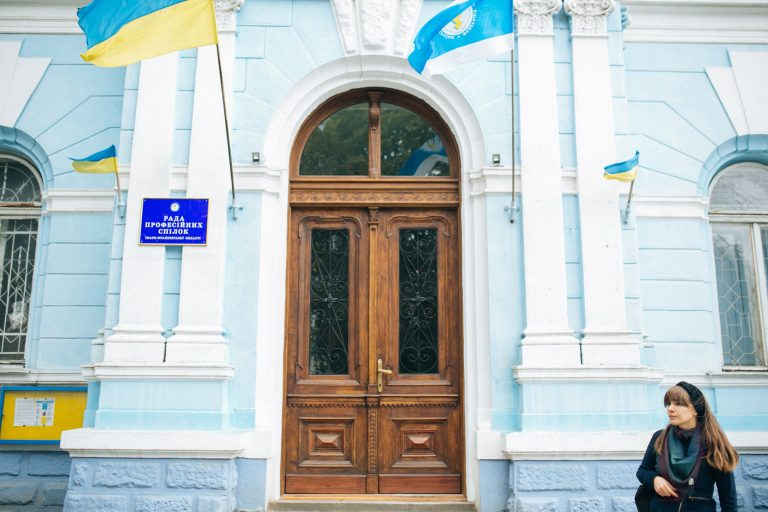
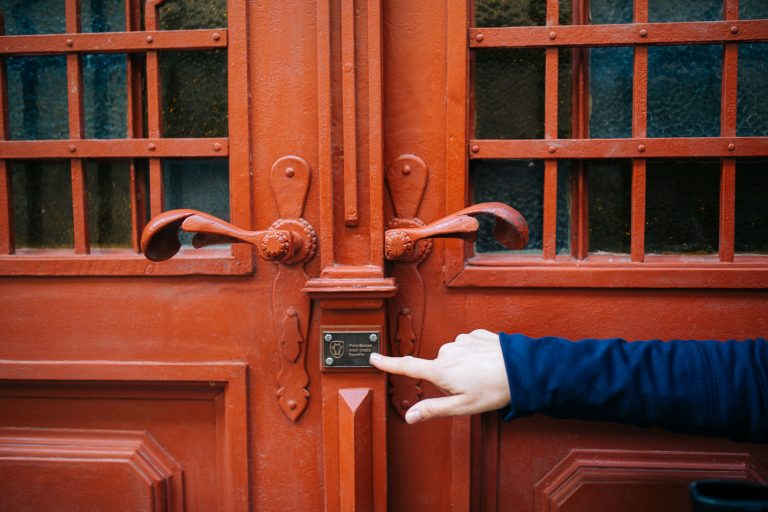
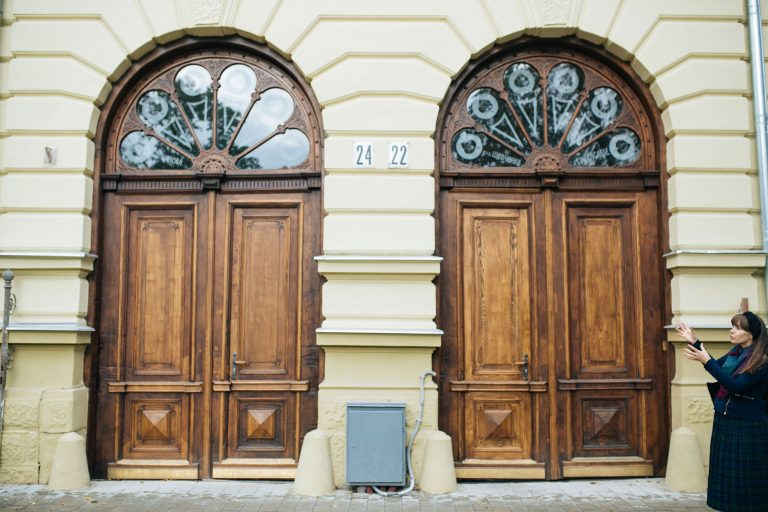
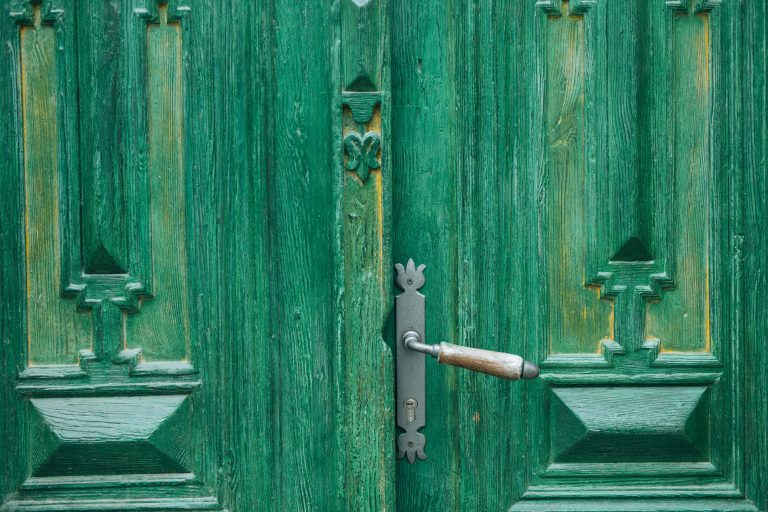
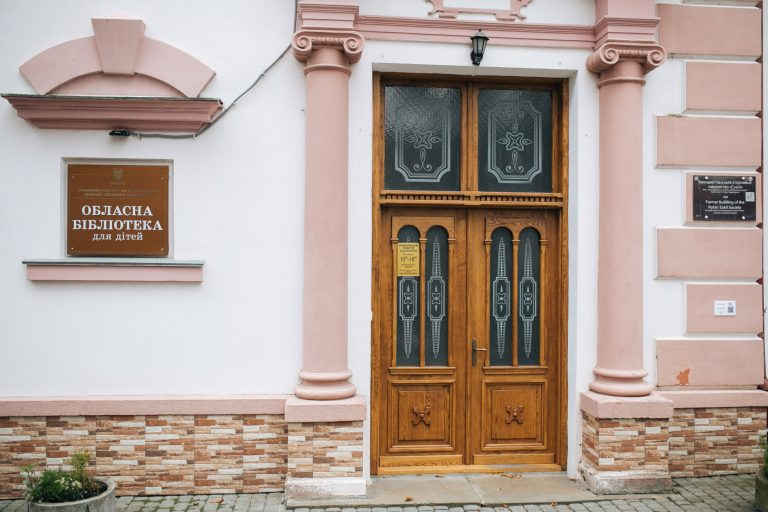
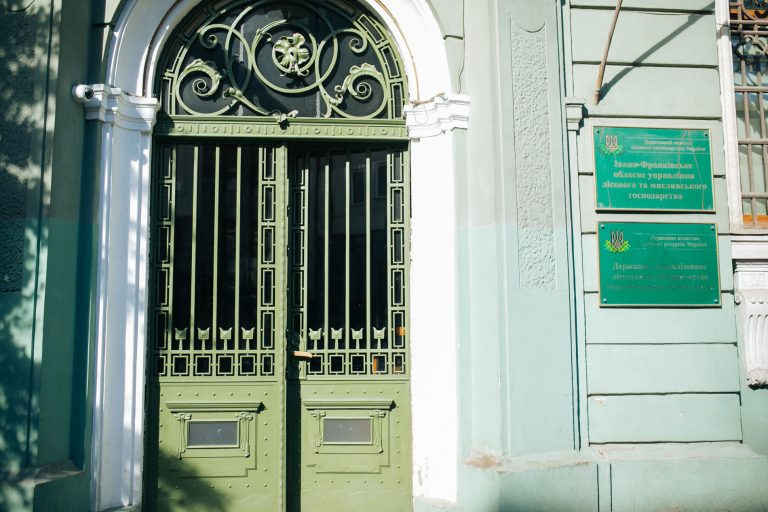
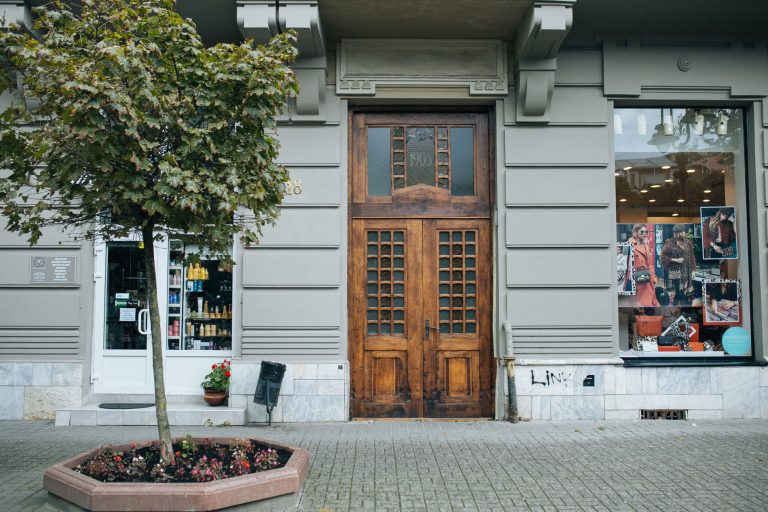
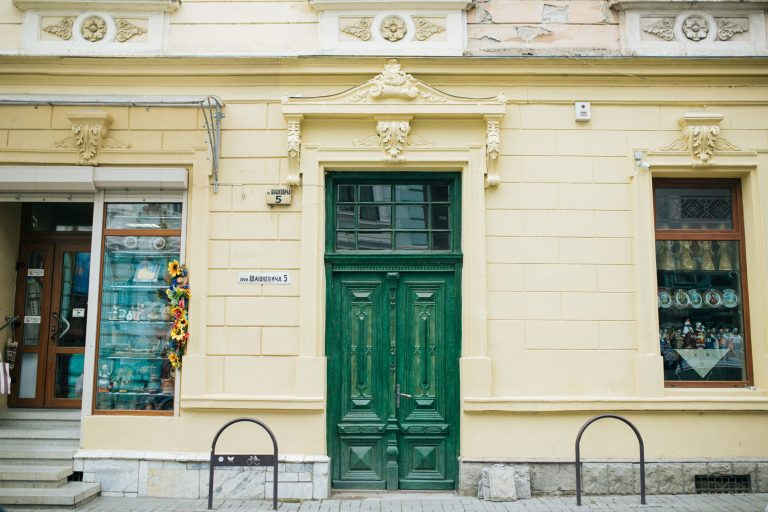
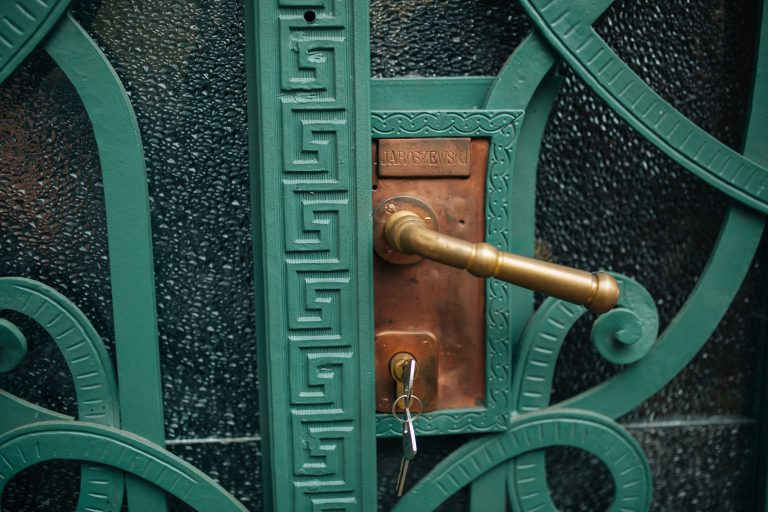
slideshow
The example with the doors, according to Marichka, is the best way to show the necessity to treat with care the elements of older times. As it’s not enough to just tell people that any of the doors is unique, or that supplementing wood with plastic really interrupts air circulation in antique buildings. It’s important though to also make clear that when an apartment of a house has as many as possible authentic elements preserved, it naturally has a higher cost than when it is filled with some standard, average things. So a good deed is to directly encourage cherishing of other elements. However, only a case example has the highest effect – when one can see the difference between the before and after restoration and to recognize that it’s great to have them saved and not replaced by plastic ones. Marichka tells about what even today inspires the citizens to treat buildings and their other elements more thoughtfully:
— Recently, we have been restoring a door in Shevchenko Street; the citizens looked at it and they say: “How awesome the door looks, it’s just that our building doesn’t go very well with it now. Probably, we should make reparations in the building by ourselves.”
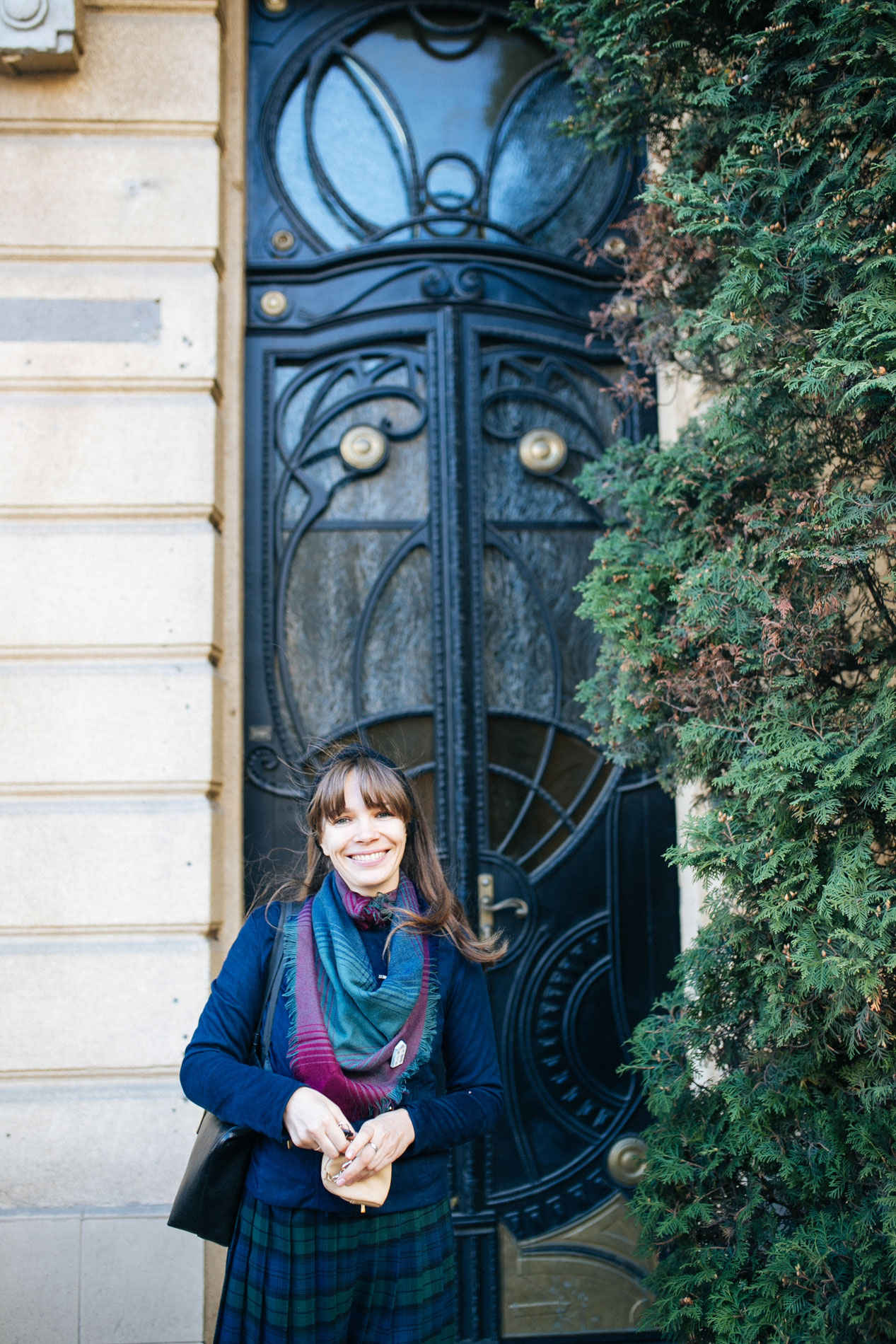
To make the activity more effective, Marichka has founded a public organization, she started to involve entrepreneurs, gather funds among locals and bravely apply to the authorities for permissions and assistance. She assures that there are no doors hard to enter through as you can always come to an agreement:
— The key is to make up your mind and be brave
At first, people were suspicious about such initiative as they had negative experience before – someone might take off the door to sell it abroad, if they knew its value. However, Marichka was not afraid to communicate with building owners in 2016 (at the dawn of their activity) and now she has a lot of results to show, and the credibility is higher. Even people themselves often write to her asking for her help with the door restoration.
For a long time Marichka has been known as a person who knows the restoration craft the best, though she herself insists that she has only gathered around the initiative different people, who were since long very much concerned about the protection of the historical heritage but themselves couldn’t get around to finally get down to work.
— My mission is like a glue – I just glue them together, inspire them, so that it just managed to finally happen and work out.

Presently, the backbone of the team involved in restoration includes around 20 people. Among them there are architects, historians, local experts and craftsmen of different types: smiths, glass-artists, carpenters, molding artists. The responsibility for the organizational work primarily falls on the shoulders of Marichka and her husband Yurii but they insist that the concerned like-minded people who go down to restoration work, who are experts in their crafts are in fact the ones who give a new life to the doors: Rostislav Khaburskyi (carpenter), Serhiy Polubotko (smith), Valerian Fedoryak (glass-artist), Oleg Senyaniv (glass-artist), Taras and Dmytro Pylyponyuks (sculpturers) and others.
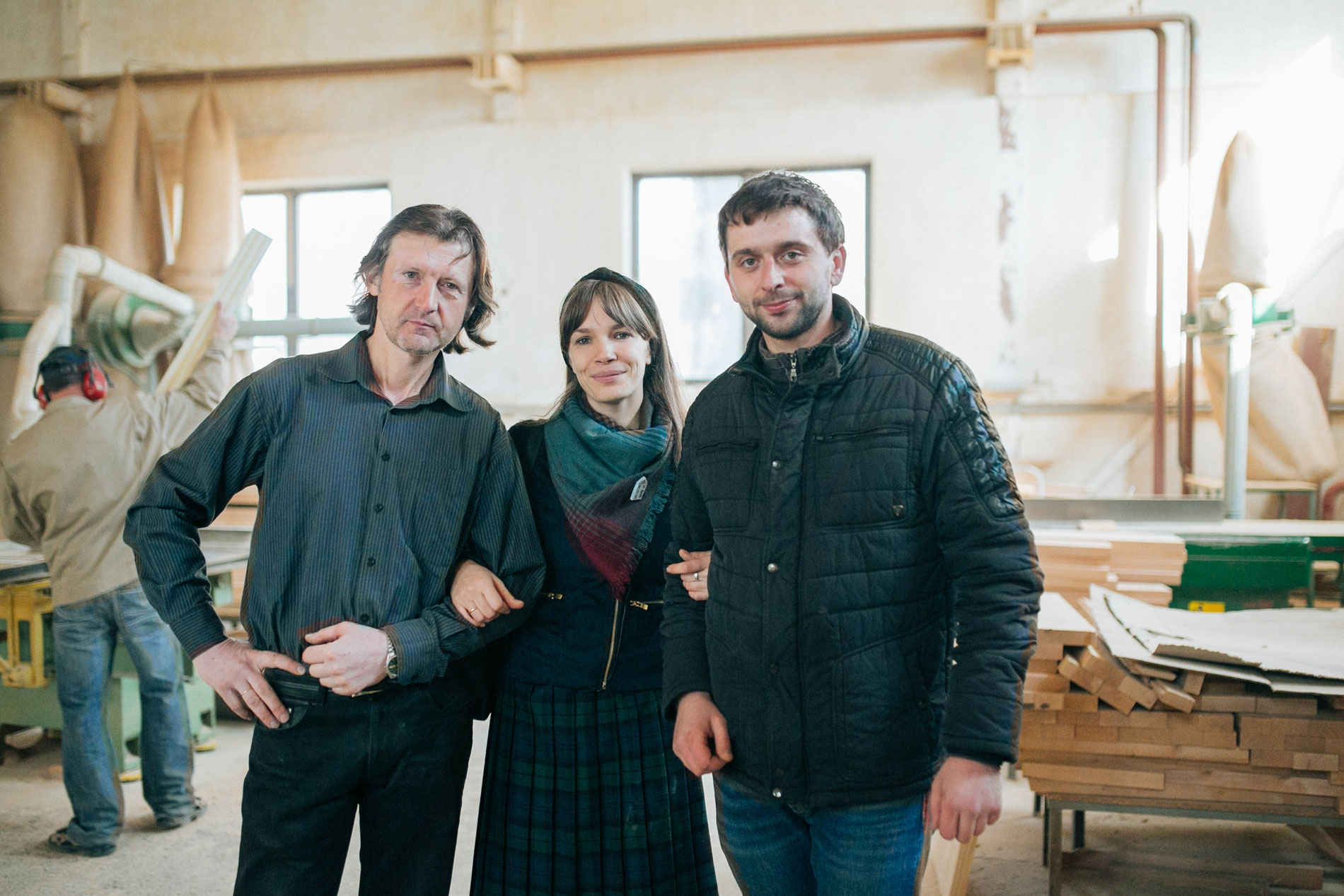
— Each door is some kind of a construction kit. And a few types of different craftsmen work on it. The carpenters, for instance, deal with the wooden part, the smiths restore the grids and every sort of a hardware, as well as door butts, door handles, inner locks, mechanisms, locking bars etc.
The team is aimed at doing the genuine restoration as when something is restored, either a painting or an antique holy image, always the spot, which was lost, is painted with a paint a few tones lighter so that a person could tell the difference between old authentic original and the restored part. There is always a note left – a tiny tag with the initiative’s logo, which must fit into the esthetics.
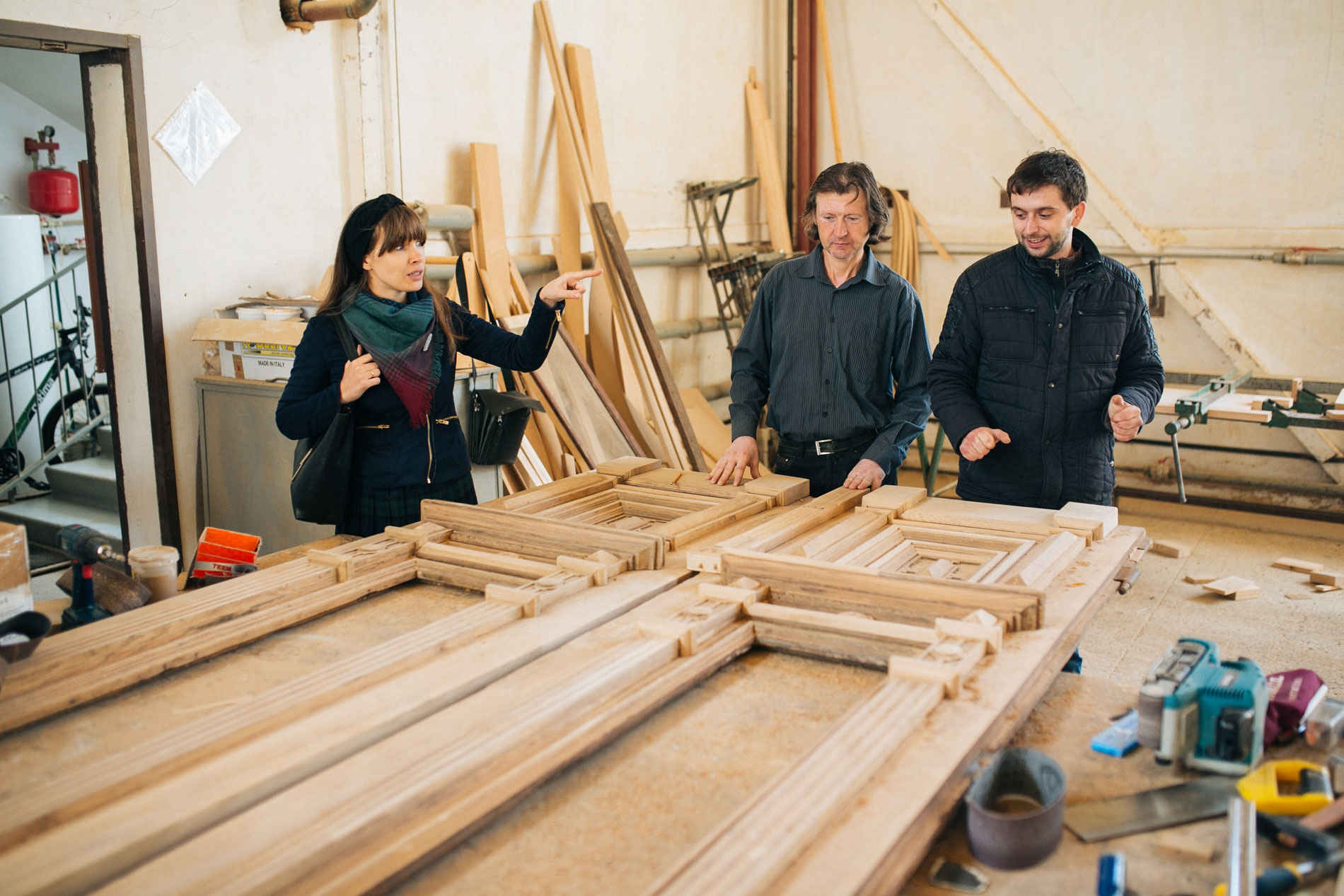
Here how they work on the doors: rotten wooden parts get replaced, while lost fragments are made from scratch based on the old pictures or even by using imagination:
—There were no grids, no records, we knew nothing at all about how it (the door – ed.) originally looked and how we could restore it. Then we started looking for other details either inside the building, or nearby, to come out of that situation somehow. And we came up with the solution so if you look closer there is a hammered fence here. We just copied the shape of this fence – also an antique and authentic – and we just reproduced it here, on the hammered grid. Thus, we found a way out, as it’s said.
So it is very important to pay attention to the details around, not just to the doors.

The Duration of the Restoration Process and Other Resources
It’s clear that the restoration process of the antique doors takes a lot of time and requires many other resources, especially when you have to work on the brass pieces or restore glass elements with beveled parts.
A money issue is always a sore point:
— Now, a lot of people contact us – they want to restore their doors too, but the very first question they ask is financial. The cost is just beyond their available resources. The restoration cost of one door reaches from 40 and up to 50-60 thousand – we know it’s hard to find.
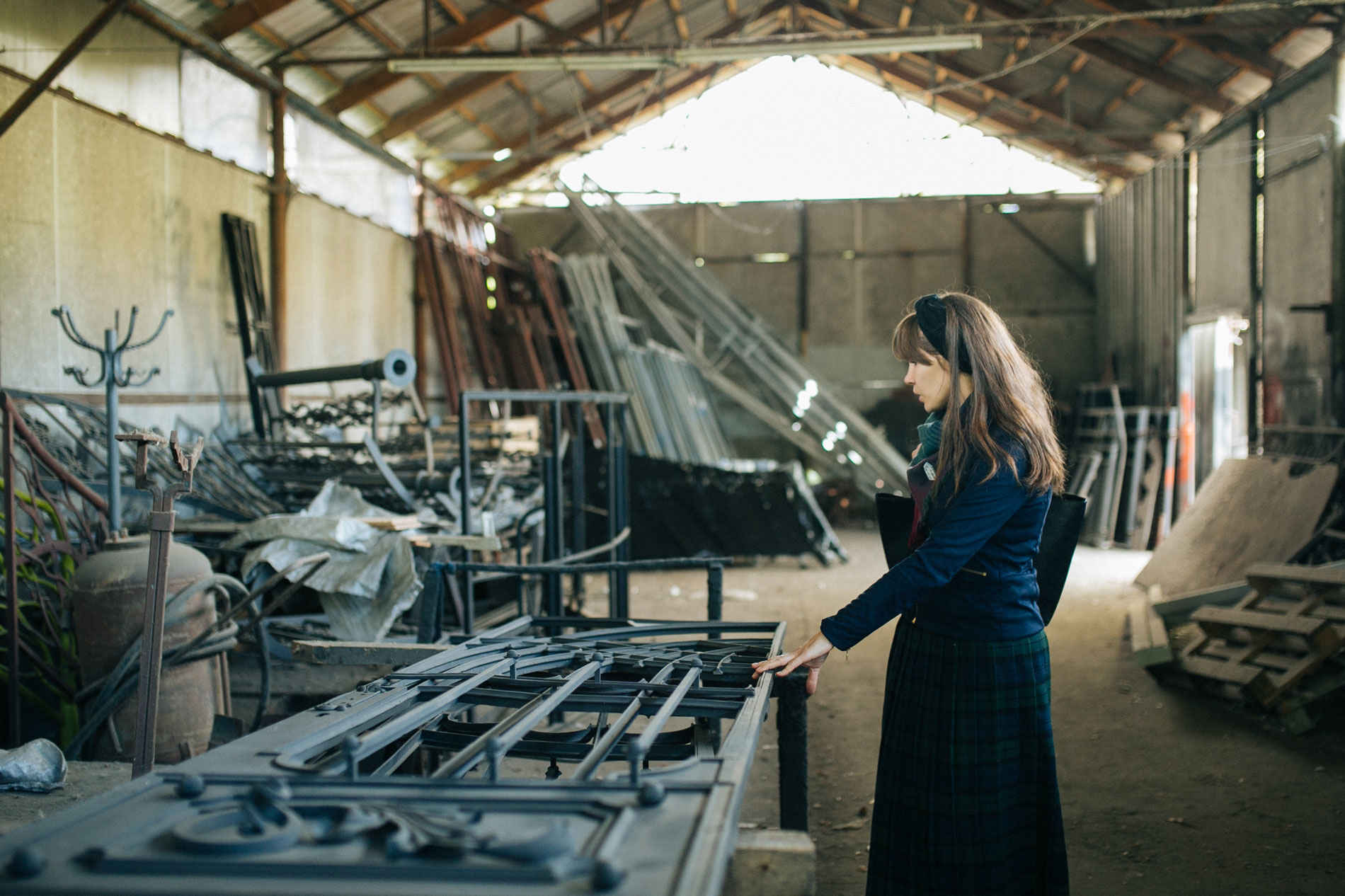
So now Marichka is actually busy with attracting new funds. Sometimes the amount can be partially collected from the residents of the building, but hardly ever it is enough, so they try to involve concerned entrepreneurs, participate in various grant programs and promote the project on different levels:
— Our anniversary 10th door (and it was symbolic) was the first door financed from the local budget as to restore the previous doors we had to find other funding sources.
The story of their search of opportunities for restoration is unique for each door, the same as the communication with house residents and superintendents. Mariya thinks with smile of when Mrs. Zhenya, one of the people living in the building, wanted to know the exact day of the door installation, she asked to make sure that they call her a day before and let her know:
— So I think, why is it so important for her to know? And then I got it. As soon as we installed the door, she comes out with a huge box full of syrnyks (pancakes made of cottage cheese – tr.) , homemade, with peaches, absolutely delicious.
Grateful people and the attention brought to already restored elements are very important. In social media Marichka often sees the pictures of Frankivsk citizens and city guests by the restored doors – that no doubt inspires for future achievements.
— The topmost task is that the locals themselves became active and started to take care of their own houses.
Syrnyks
Pancakes made of cottage cheese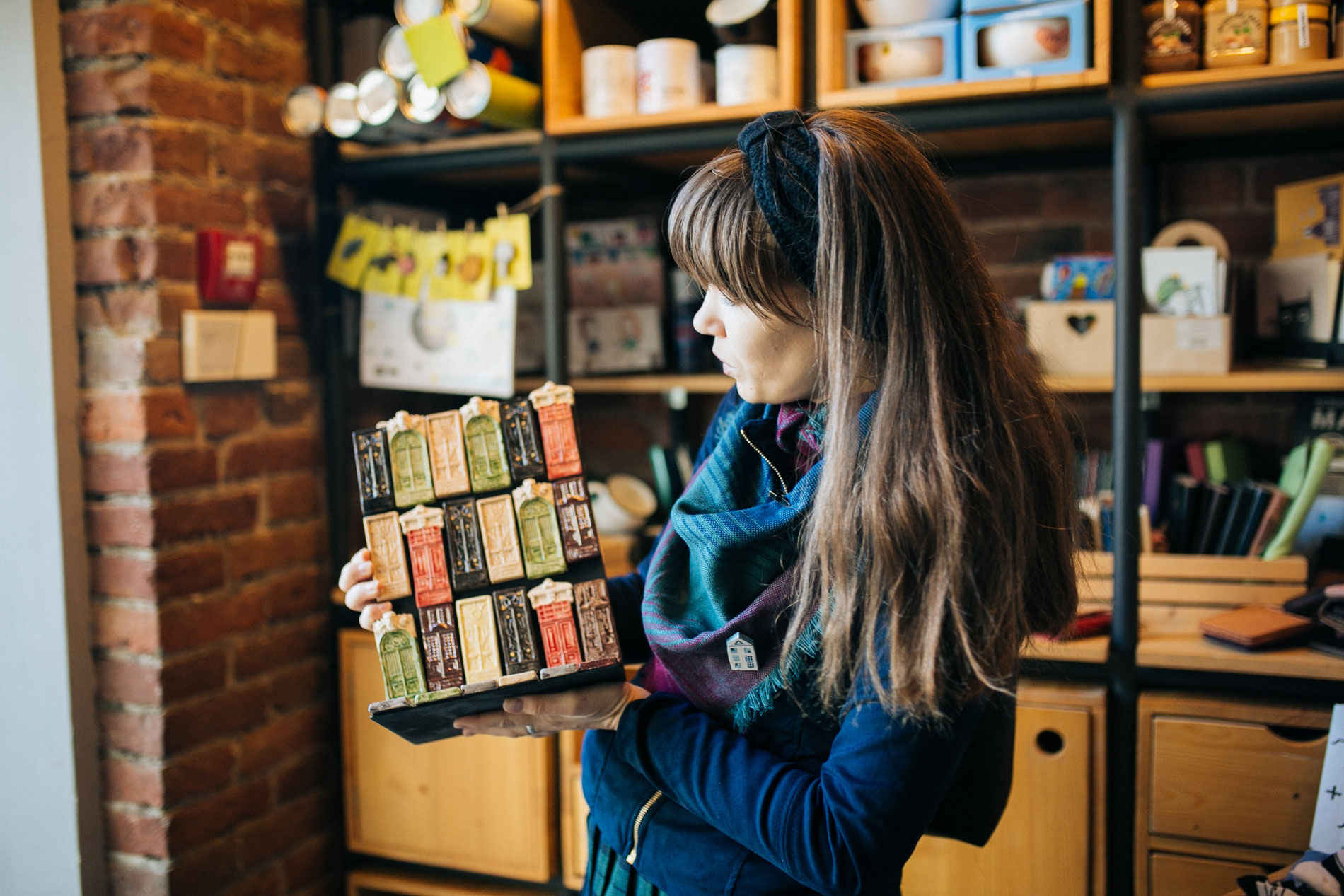
A Library and the Fairy-Tale Tower
One of the projects introduced by Mariya Kozakevich and the initiative’s members in cooperation with a library for children is the Fairy-Tale Tower. As one wing of the building (the library’s) has the tower, looking on which one can imagine a story with a princess and a prince, or other fairy-tale characters.
Two restoration projects have been already implemented in this place. The first of them was the door:
— They put a plastic door. Though the original one was not thrown away; we renovated it too and put back like this. For me it’s the matter of a strong principle, as when the kids go to the library to obtain certain knowledge, you want them to enter the library through an authentic door.
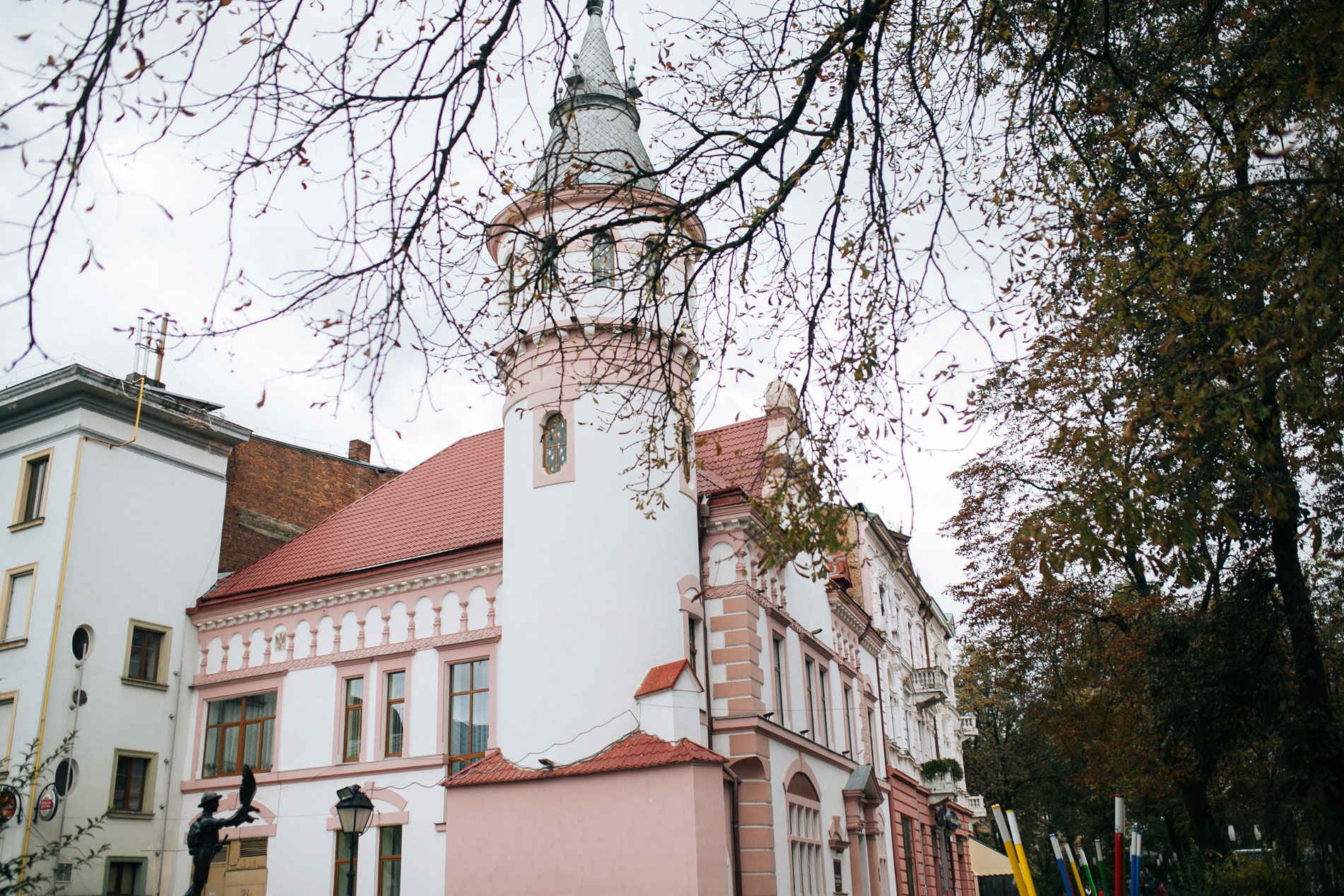
The following project was the windows reconstruction in the tower, which thanks to the members of the initiative is called fairy-tale now. Before, it was boarded up. i.e. you could see no windows at all. But everything changed when, after the door reconstruction had been completed, we asked the director to allow us to come upstairs. The first impression was striking: the place was dirty and dark, we had to use the phone light to see where we stepped. And we came across the antique window frames made of wood, and we started to work on them almost immediately: took to the workshop for restoration, and the rest of the windows were just made according to their sample. Later we started working on the stained-glass windows.
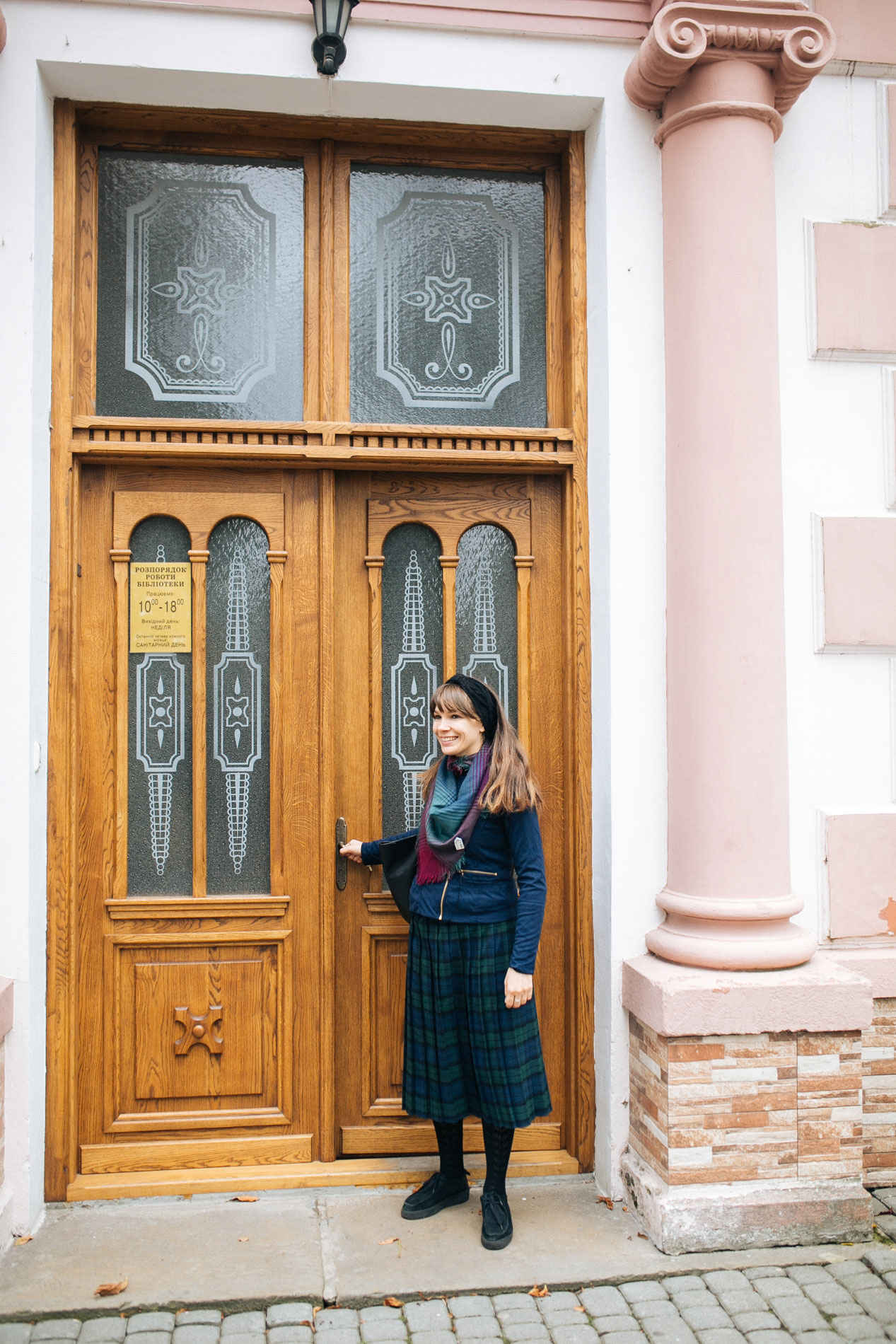
— We were thinking for a long while how stained-glass windows should look like – once again the problem of missing records occurred, and on the pictures such small details look as black stains anyway – you’ll never know how it was before. So we did the following: we found a happy medium so to say: some windows and glass fragments have a diamond shape, and they look very similar to the pendant on the roof laid with alike diamonds. So we also used the diamond shape for these stained-glass windows.
Today, the tower alongside the Mitskevich monument has beautiful illumination in the evening and the glass fragments add a lot of colorful tints that truly creates a sense of a fairy-tale.
However, Mariya didn’t leave it at that. Library is where children should be excited to come to, so the project “The Fairy-Tale Tower” is more than just about doors and windows reconstruction – it’s about the atmosphere and the opportunities available in this library too. That’s why the goal is to give an open access to the tower and to make sure the library has a comfortable space for easy reading, which children need so badly.
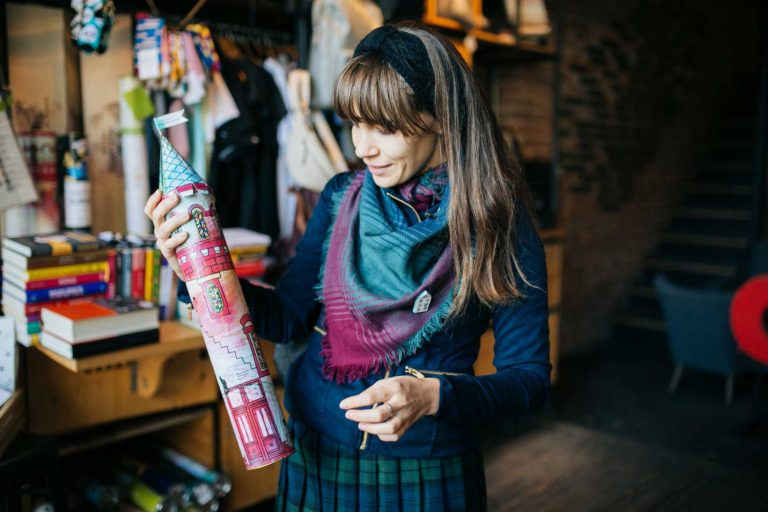
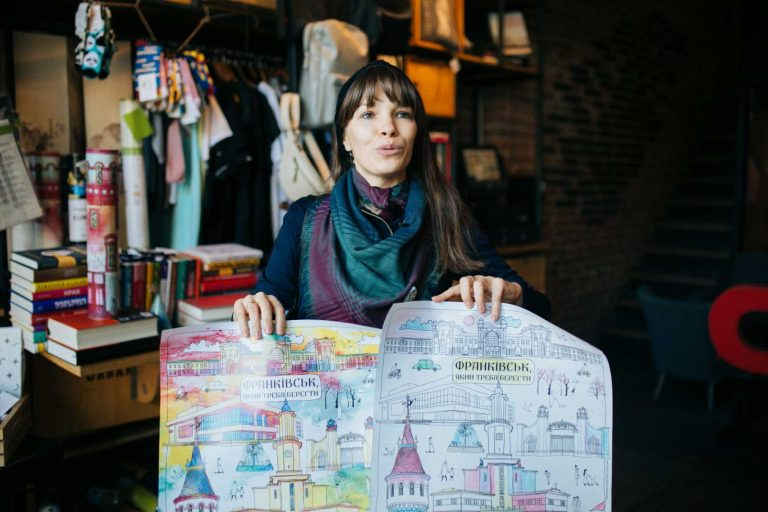
slideshow
The space around the square where the library is located has incredibly changed just for one year, thus proving that a certain fairy-tale is real – if the community takes an active part and helps to create their own comfort:
—It’s all due to a few initiatives that have been doing good deeds here. One initiative has made a playground for children, other one turned the whole street into a pedestrian area. We are responsible for the doors. Here is one door, another one is there, and in the corner there is the third one being restored. As a matter of fact, for just one year the whole space has changed so much: it became so comfortable for walking with kids, for instance, when you don’t have to worry that a car may drive out from somewhere. You can easily have a cup of coffee around, and the kids will be just playing here. I mean, the city does start to gain such elements of comfort.
The initiative’s team show by personal example that you can achieve any results for common goal, fight your way through to obtain required documents, to find the necessary resources and get organized not only for the common good but for your own pleasure.
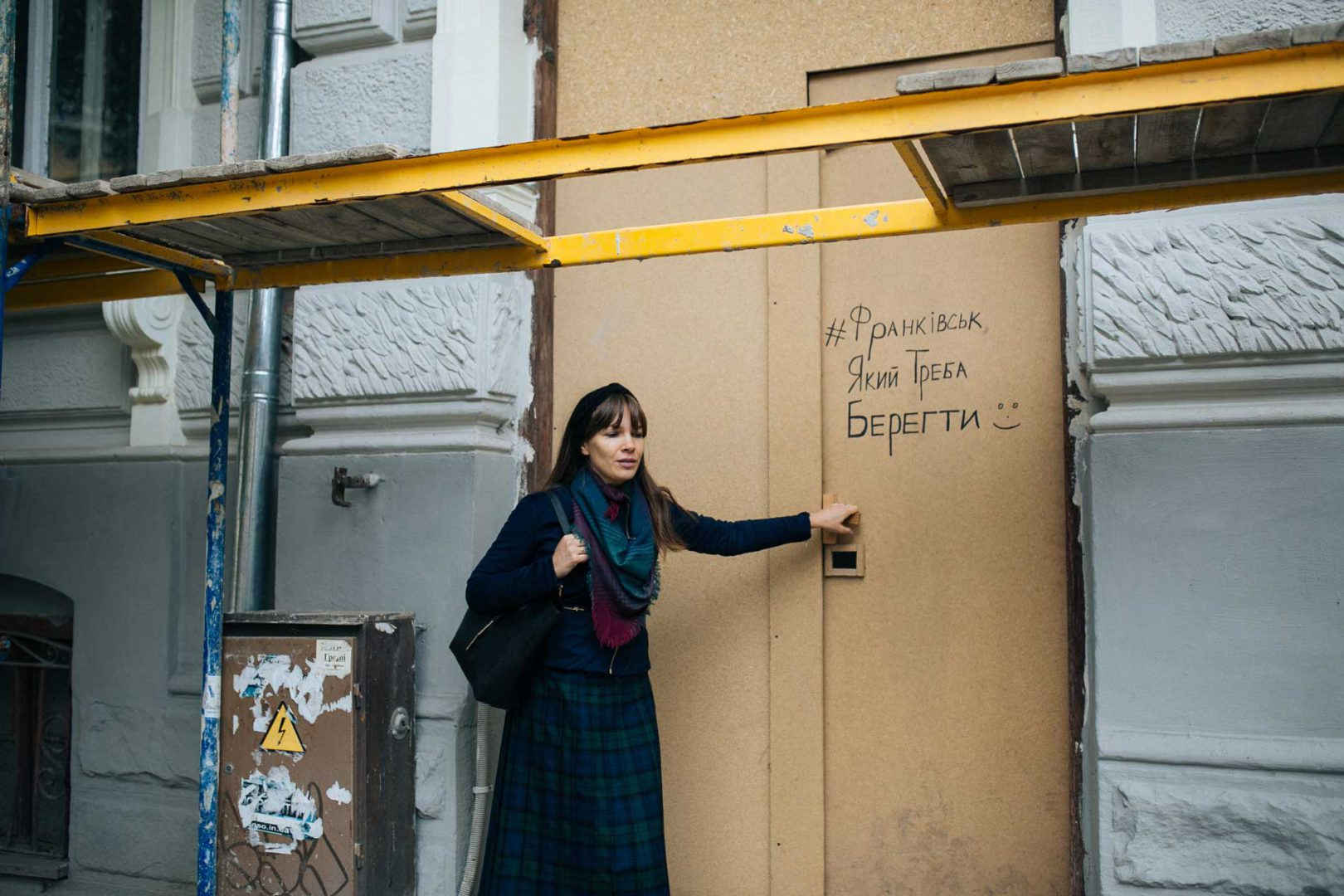
Tysmenytsia Gates and not by Doors Alone
In summer of 2018, when a reconstruction of Lesya Ukrainka Street in Frankivsk was coming to an end, a monument of historical value was found, and it united half of the city for mutual work. It was what was left from Tysmenytsia Gates, which was a part of Stanislav Fortress in older times. The purpose of the fortification construction became a thing of the past, so the fortress was taken down, only the underground part left: a wall made of white stone – the alabaster – brought from Vovchynets Mountains not far from Frankivsk. In fact, the wall survived, and the activists decided to dig it out and brush it up:
— Consequently, there were certain doubts, second thoughts but, nevertheless, we managed to persuade both public utilities and local authorities that these things must be kept safe, and the archeological excavations need to be done. You may also see that the logo of the tag we hang on the doors – in case you’ve noticed it – so this shape and the initiative’s logo, in fact, are the shape of the Stanislav Fortress. Why did we choose it? As if before it was the fortress protecting the citizens, now the necessity occurred that it be the citizens protecting the antiquity.
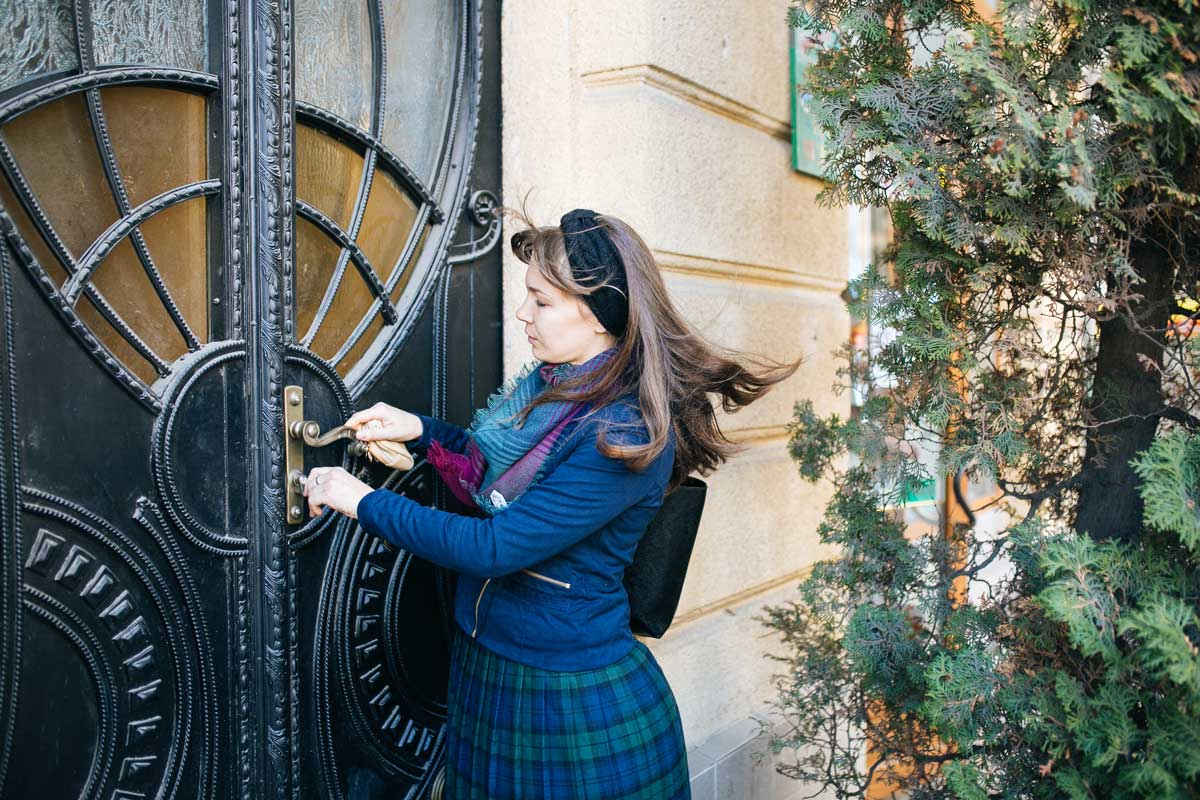
The tower itself attracts attention: in some places the setting is vertical, in others horizontal, and in some places it is even built from antique “palchatka” brick . We had a lot to do, though when we dug out the main part, the rest was just “esthetic” procedures that should be made with brushes. So then we called people willing to join the excavations. And such field archeology in the center of the native city is so fascinating:
— With my own hands I found a tiny coin on that spot, which is called “buratinka”, and there was 166…something year engraved, the last digit is gone. The same way we found a boar’s fang, so we can guess that the warriors were sitting in the fortress and then decided to grill a boar, so the fang was left.
“Palchatka” brick
In XV-XVII centuries was being solely handmade, therefore its surface always has a few dints made by craftsman’s fingersWe managed to find here the fragments of goblets, tableware, various coins and animal bones, and such searches have an incredible force in uniting people and making history popular:
— ТI mean, everyone joined our initiative: archeologists, local historians from the “My city” community. Public utilities joined too – they helped with equipment as we needed excavating and boring machines on top of all, so they were coming and helping with that; they helped to remove soil too. Ordinary people made their contribution as well – they were bringing coffee with croissants.
This public initiative was taken up by different activists who joined together and for one and a half months were doing excavations, after that they made an archeological report and promoted the idea of turning the findings to museum. It is planned to cover the wall with a glass dome and to make it a public space to use it as a sightseeing and a specialized spot for community – to include informational stands and attract people to come here with kids and friends.
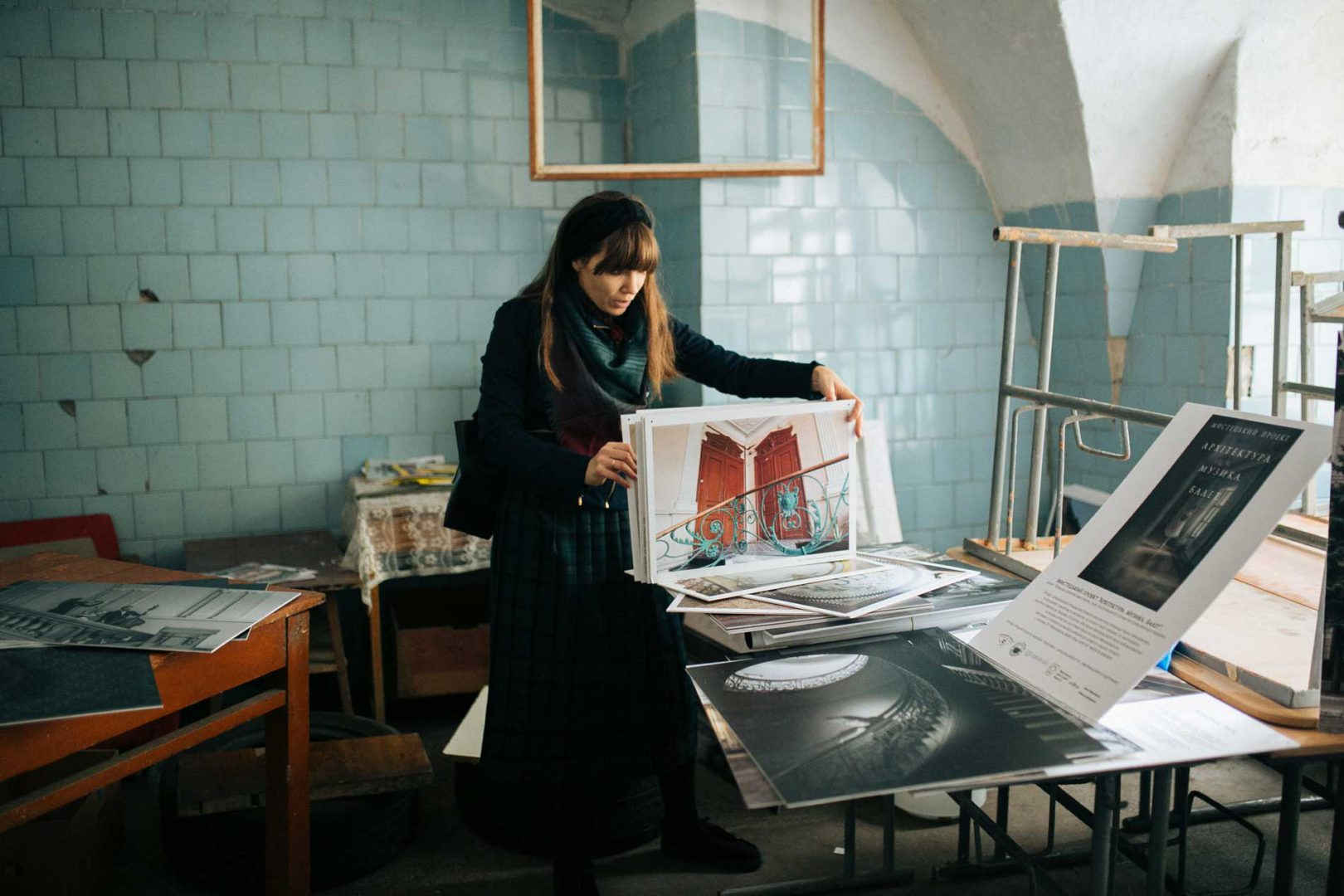
The “Frankivsk that should be cherished” initiative itself is not limited by doors restoration, archive investigation and records search or spreading information about historical value of local heritage but also shows how important each element of the process performed by the team is:
— To my mind, one of the greatest achievements of the “Frankivsk that should be cherished” initiative is that we tell about and show our every move. I mean, every stage – from taking the door off, from talking to people living there, every stage of the restoration process: removing of paint, making a new door handle, then some other things, then we put the door. People follow all these steps, they are always kept informed, they can even give a piece of advice, a recommendation, offer their assistance or free hands.
As for the goals and plans, Mariya and her team see no limits as they have something that inspires for making new brave moves and encourages to act at first glance recklessly, but brings a huge team together – it is their love to a native city.
— The biggest goal is to infect everyone with this love!
